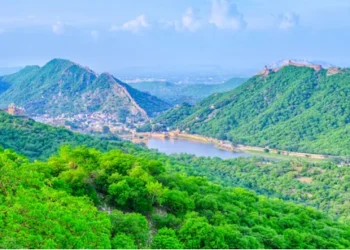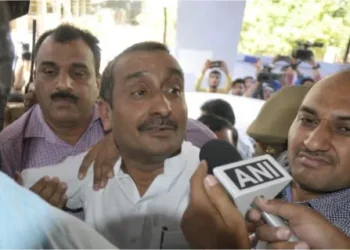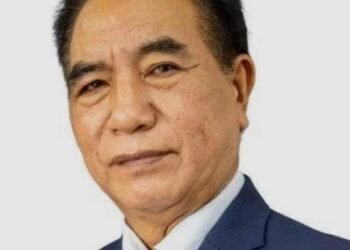Behind the dramatic headlines of over 200 weapons seized lies a quiet campaign of behind-the-scenes negotiations, anonymity, and a fragile push for peace, say well-placed sources.
BY PC Bureau
July 5, 2025 — In a development that raises questions about the official narrative, multiple sources have revealed that the massive cache of weapons claimed to have been “seized” by security forces in Manipur yesterday was, in fact, handed over by individuals acting under a discreet understanding between Government officials and civil society groups.
The Manipur Police had on July 4 issued a statement touting a “major intelligence-based operation” across the hill districts of Tengnoupal, Kangpokpi, Chandel, and Churachandpur, in which over 200 firearms, explosives, and ammunition were recovered. The official version described it as one of the largest crackdowns on illegal weapons in recent months, involving combined teams of the state police, Assam Rifles, Indian Army, and Central Armed Police Forces.
READ: The Mate Case (Part-2): Defense Strategy – Picking Apart the NIA Case, Line by Line
However, well-placed sources familiar with the negotiations said that what transpired was not a series of raids but a deliberately staged recovery aimed at protecting those surrendering the weapons from criminal prosecution.
“Since no group or individual wanted to be identified as being in illegal possession of these weapons, they struck a deal to project it as a case of seizure,” said a source with direct knowledge of the developments.
According to sources, the arms were surrendered as part of an informal disarmament push initiated after an appeal by Governor AK Bhalla’s in February 2025, urging individuals and communities to give up illegal arms amassed during the ethnic unrest.
Without confirming or denying the claims made by sources, one cannot help but question the official narrative. How could such a massive cache of weapons—ranging from assault rifles to mortars—have remained concealed across the hills, unguarded, and conveniently available for recovery by security forces? It stretches credulity that in all four districts, the same pattern of concealment and seizure unfolded—without resistance, confrontation, or a single arrest. The uniformity of the operation raises more questions than it answers.
Behind-the-Scenes Negotiation
In a well thought of approach, the police, said sources, had been quietly negotiating with local civil society organisations, including tribal community leaders and other groups, for several weeks. “The goal was to bring in as many weapons as possible without antagonising communities or risking fresh conflict,” one source l said. “This required trust and anonymity.”
In return, those surrendering arms were reportedly assured that no arrests would be made and their identities would not be recorded officially.
This explains why, despite the sheer volume and military-grade nature of the arms recovered—which included INSAS rifles, AK-series assault rifles, sniper rifles, mortars, grenade launchers, and IEDs—not a single person was arrested in what was claimed to be a massive overnight crackdown.
The discrepancy between the police version and the reality on the ground has triggered skepticism among observers and civil society groups.
PRESS NOTE
Major Recovery of Arms and Ammunition by Manipur Police, Assam Rifles/ Army
and other Security Forces.
From the midnight of 3rd July 2025 to the morning of 4th July 2025, Security Forces (SFs) conducted
extensive search operations in the hill districts of Manipur.… pic.twitter.com/DuCRqH9gJ1— Manipur Police (@manipur_police) July 4, 2025
“If these were truly recovered during a sweeping raid across four volatile districts, how is it possible that not one suspect, handler, or militant was present or arrested?” asked a former state security officer who reviewed the list of recovered weapons.
Political Optics and Public Order
Insiders suggest that the decision to project the surrender as a seizure may have been motivated by two factors: (1) to maintain law enforcement credibility in the public eye, and (2) to avoid backlash against individuals or groups cooperating with the police.
READ: After China’s Outburst, MEA Distances Itself from Rijiju’s Dalai Lama Succession Remarks
“This was a calculated trade-off—preserve peace and recover weapons quietly, or launch confrontational raids that could destabilize the situation,” a second source familiar with the security briefings said.
While authorities remain tight-lipped about the nature of these “operations,” this could mark the beginning of a soft disarmament strategy in Manipur—quietly convincing communities to return weapons in exchange for amnesty, while publicizing the outcomes as law enforcement successes













